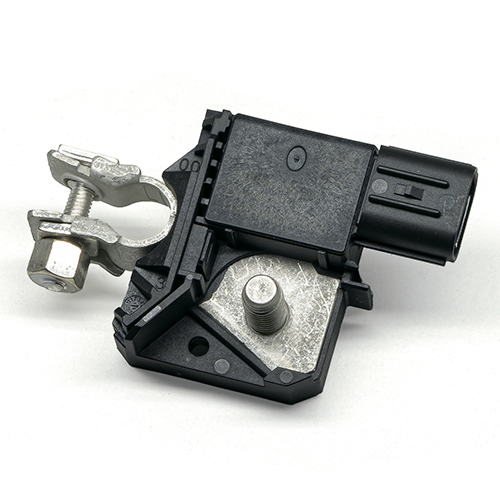HBCT Family
Automotive current sensor for battery management systems
HBCT - Automotive current sensor
The HBCT family provides to an engine control unit (ECU) the actual value of current flowing in and out of the battery and the ambient temperature by a NTC thermistor. The current measurement is performed with a full galvanic separation between the primary circuit (high power) and the secondary circuit (electronic circuit).
The HBCT 250-V proposed a battery clamp mounting and the transducer is linked to the ECU with the wiring harness using a waterproof connector.
HBCT current sensors are relying on the hall effect technology. They are designed for automotive applications.
HBCT – Features and benefits

Main characteristics
- Open Loop transducer using the Hall effect
- Unipolar +5 V DC power supply
- Primary current measuring range up to −250 A / +100 A
- Maximum RMS primary admissible current: defined by battery pole to have T < +150 °C
- Operating temperature range: −30 °C < T < +90 °C
- Output voltage: full ratio-metric (in sensitivity and offset)
- Ferrite material magnetic core allowing high frequency primary current ripple with low self-heating.
Benefits
- Excellent accuracy
- Very good linearity
- Very low thermal offset drift
- Very low thermal sensitivity drift
- High frequency bandwidth
- Non insertion losses
- Very fast delay time
Typical applications
HBCT current sensors are designed for automotive applications, especially for battery management system.
HBCT sensors – ASK FOR SAMPLES / QUOTATIONS
Looking to receive samples or a quotation? Please click on the contact button below and provide us with the information you need on this product series. Our sales team will get back to you shortly.